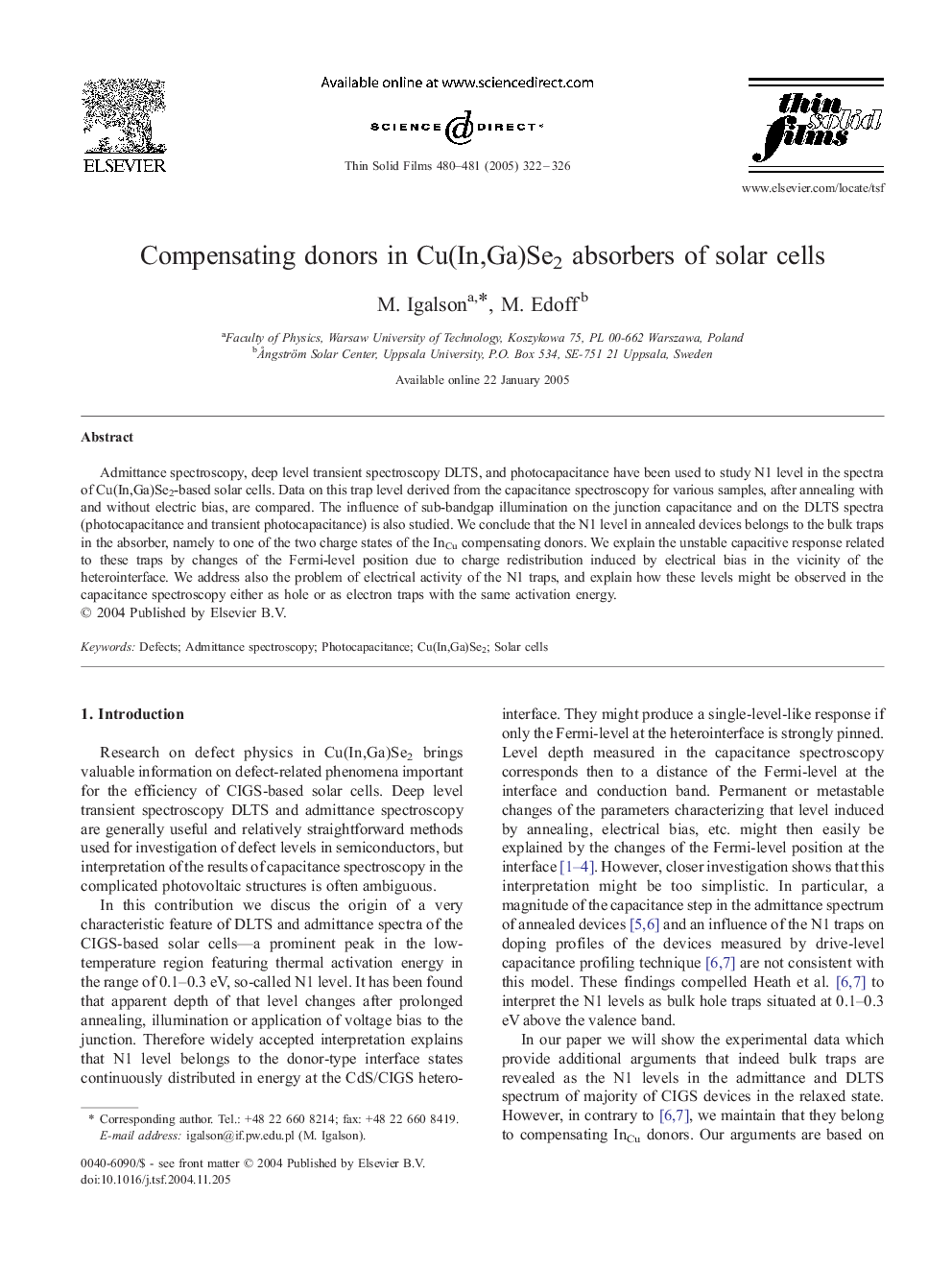| Article ID | Journal | Published Year | Pages | File Type |
|---|---|---|---|---|
| 1674870 | Thin Solid Films | 2005 | 5 Pages |
Admittance spectroscopy, deep level transient spectroscopy DLTS, and photocapacitance have been used to study N1 level in the spectra of Cu(In,Ga)Se2-based solar cells. Data on this trap level derived from the capacitance spectroscopy for various samples, after annealing with and without electric bias, are compared. The influence of sub-bandgap illumination on the junction capacitance and on the DLTS spectra (photocapacitance and transient photocapacitance) is also studied. We conclude that the N1 level in annealed devices belongs to the bulk traps in the absorber, namely to one of the two charge states of the InCu compensating donors. We explain the unstable capacitive response related to these traps by changes of the Fermi-level position due to charge redistribution induced by electrical bias in the vicinity of the heterointerface. We address also the problem of electrical activity of the N1 traps, and explain how these levels might be observed in the capacitance spectroscopy either as hole or as electron traps with the same activation energy.
